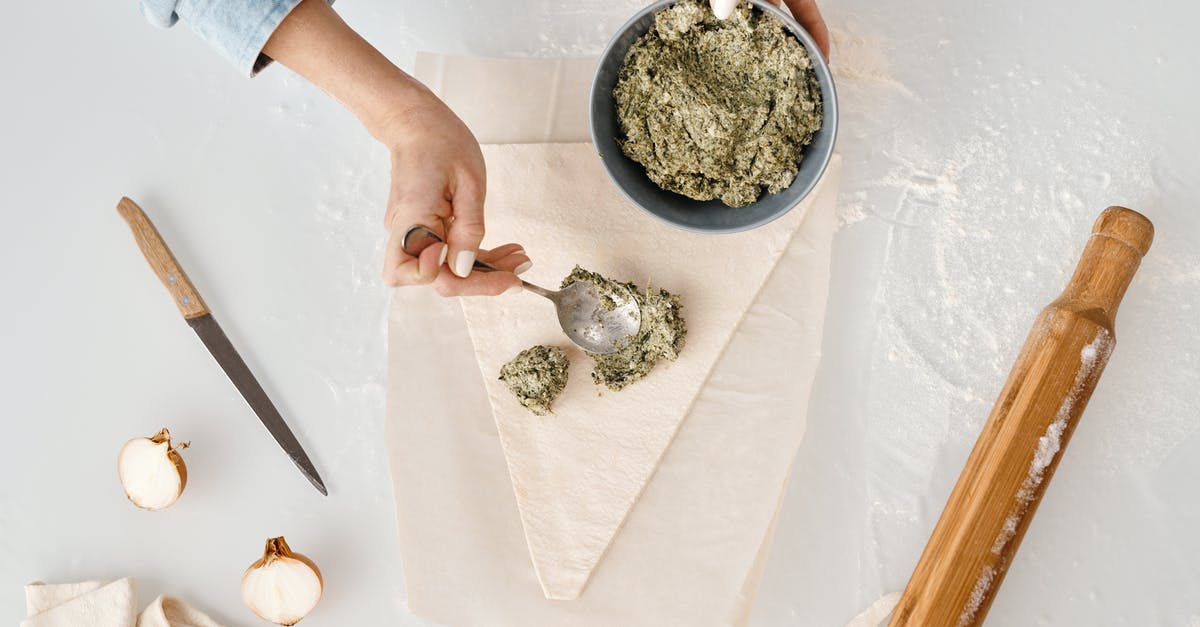Why did mold develop on the top of my sourdough?

I made some sourdough starter from scratch, using garden grapes, flour and water. It was wonderful for the first few batches. Today, I was going to get another bread batch going, and when I looked at the refrigerated starter, there was a good layer of fuzzy mold on top.
Of course, I threw it out. But was it exposure to unwanted bacteria, or the temperature of my fridge (I kept it in our beverage fridge, which is warmer than our main fridge), or the length of time (two weeks) I let it sit unused that did it in? Or does homemade sourdough keep less well than what you can get commercially?
Best Answer
There shouldn't be any significant difference between an established homemade sourdough culture and one that's seeded from something you bought (I'm assuming like the culture that King Arthur Flour Co sells online). In fact, no matter where you bought your starter culture, over time the local bacterial flora would crowd out the bacteria that was in the culture you bought. But, I'm sure the mold infection had nothing to do with rogue bacteria. (Bad bacteria can spoil a starter too, but that would be a different set of symptoms from the green carpet on top.) It could be that your starter didn't get well established, but it doesn't sound like that was the problem if you successfully made some bread from it.
In a sourdough culture, the acid produced by the bacteria and alcohol produced by the yeast make an environment that's somewhat resitant to bad bacteria (like salmonella) or mold. But the culture needs to be fairly active to maintain its resistance. After two weeks in a warm fridge, your yeast would be dormant and the bacteria would probably have run rampant for a while (after the yeast went dormant) and then started to also die off.
In a warm fridge you could maybe go a week without feeding the culture. At room temperature it's one day optimally and two days max. The best way to avoid infection is to have two small covered containers about 1½ to 2 cups in size. To make a new generation of your starter, begin with a clean container, add equal parts by weight of the previous generation of starter, flour and water. So for example, 25 grams of starter, plus 25 grams of flour and 25 of water. Mix it up and put it in the fridge. In one week, get the other container, clean it out, and do the same thing over again.
I always keep the old generation in its container as a backup (in case of a mold or other infection). You just need to keep track of which container has the fresher starter, so you can clean out the old one when building the next gen. I did this for more than 3 years with no infections of any kind.
Pictures about "Why did mold develop on the top of my sourdough?"



Quick Answer about "Why did mold develop on the top of my sourdough?"
Mold is aerobic and needs to have oxygen. That's why you will most likely see mold on the top of your sourdough starter. An environment where you have no oxygen will help to prevent mold from growing.What if my sourdough starter has mold on top?
If mold does appear, it may be time to discard the starter and begin again with a new starter, or it may be possible to revive the starter. Exercise good judgment. If the mold is only infecting the surface, reviving the starter may be appropriate.Why does my sourdough bread get moldy?
Sourdough will first go stale from the crumb hardening and drying out. It will then show signs of fungus in the form of visible mold on the surface. Staling is the first main culprit to watch out for as the antifungal properties will keep the bread from going green for quite a while.What is the black stuff on top of my sourdough starter?
The dark liquid is a form of naturally occurring alcohol known as hooch, which indicates that your sourdough starter is hungry. Hooch is harmless but should be poured off and discarded prior to stirring and feeding your starter.What does mold on sourdough look like?
Mold can appear in various colors and is typically fuzzy in appearance. Bad bacteria is generally indicated by an orange or pink tinge or streak. Once your starter has lost its natural ability to ward off intruders, it's time to start over.How To Fix A Sourdough Starter Gone Mouldy
More answers regarding why did mold develop on the top of my sourdough?
Answer 2
My understanding is that while sourdough starter is somewhat mold resistant thanks to the yeast and the bacteria that make it acidic, it's still vulnerable to mold.
My thoughts are that if you're finding that your homemade starter is going moldy faster than a bought starter, perhaps yours was a little weak in the bacteria department. That would leave it less active and less acidic, opening the door for the mold. It might also be underfed, since lively yeast action should help with mold too.
I haven't even tried to keep a starter alive for more than a little while (I invariably forget about it and throw it out after months), so it's all kind of theoretical for me.
Answer 3
Just scrape the molded bits off. It's sort of like cheese in that way. The mold doesn't get any further than the surface.
It does mean you've got a bit of a weak starter though.
Sources: Stack Exchange - This article follows the attribution requirements of Stack Exchange and is licensed under CC BY-SA 3.0.
Images: Nicole Michalou, Julia Volk, Nicole Michalou, Julia M Cameron
